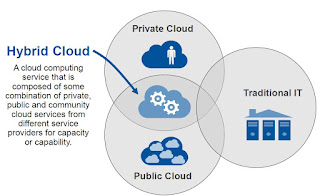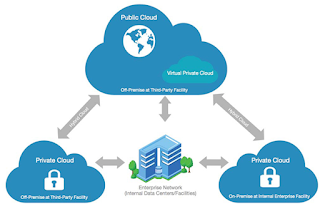What is Hybrid Cloud ?

Hybrid Cloud Hybrid cloud combines public and private clouds. It allows companies to mix and match the facets of all the types of cloud to best suit their requirements. For example, a company can balance its workloads by locating mission-critical workloads on a secure private cloud and deploying less sensitive data on public one. It not only safeguards and controls strategically important assets but does so in the most cost- and resource effective way. The major benefits are: Improved security and privacy Enhanced scalability Reasonable price The Major concerns are: Makes sense only if companies can segregate their data into mission-critical and non-sensitive




